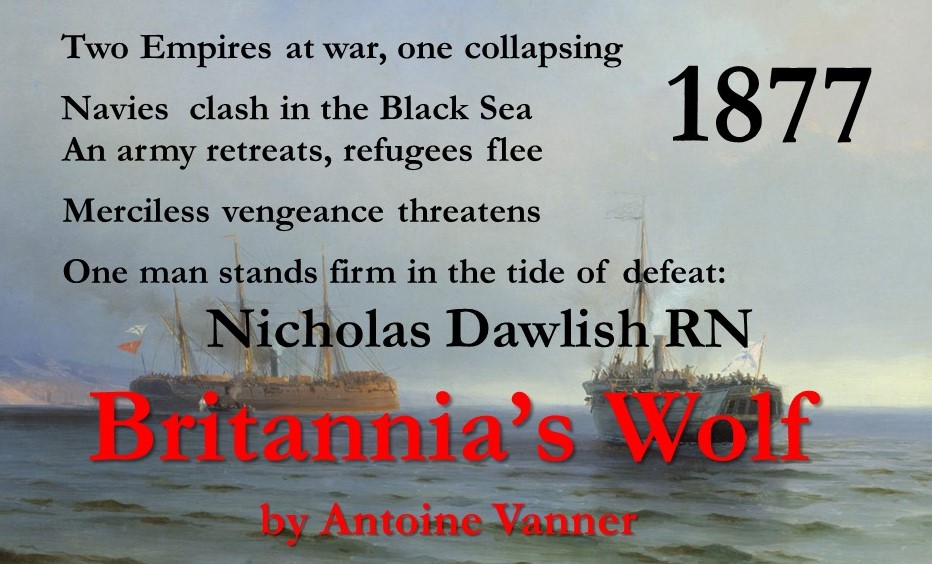The Royal Navy’s emergency purchases, 1877/78
and the Mesrutiyet, a heroine of “Britannia’s Wolf”
A key role is played in the first of the Dawlish Chronicles, “Britannia’s Wolf”, by the Ottoman-Turkish ironclad Mesrutiyet (“Constitution”) which was built by Samuda’s, a British shipyard at Poplar, on the Isle of Dogs, London. Ship-building was at that time a major industry on the lower Thames.
Mesrutiyet is described as the first of a class of three and was delivered to the Ottoman Navy before the outbreak of the Russo-Turkish War in April 1877. The second two ships had not yet been completed – and indeed Nicholas Dawlish visits them in the book so as to be familiar with the Mesrutiyet’s layout before he sets out for his service in Turkey.
In actuality the delivery of these two ironclads to the Ottoman Navy could however have been interpreted by the Russians as a hostile act by Britain. The possibility also existed that Britain might still be drawn into the conflict – as it had been into the Crimean War with Russia two decades earlier – and it was considered vital to augment the Royal Navy’s resources in anticipation of this. The decision was accordingly taken to purchase the two uncompleted Turkish-ordered ironclads for the Royal Navy and they entered service as HMS Orion and HMS Belleisle.
The details of these ships are of interest, not least in view of the similarity to Mesrutiyet and the description below should be read while referring to the contemporary engraving shown here.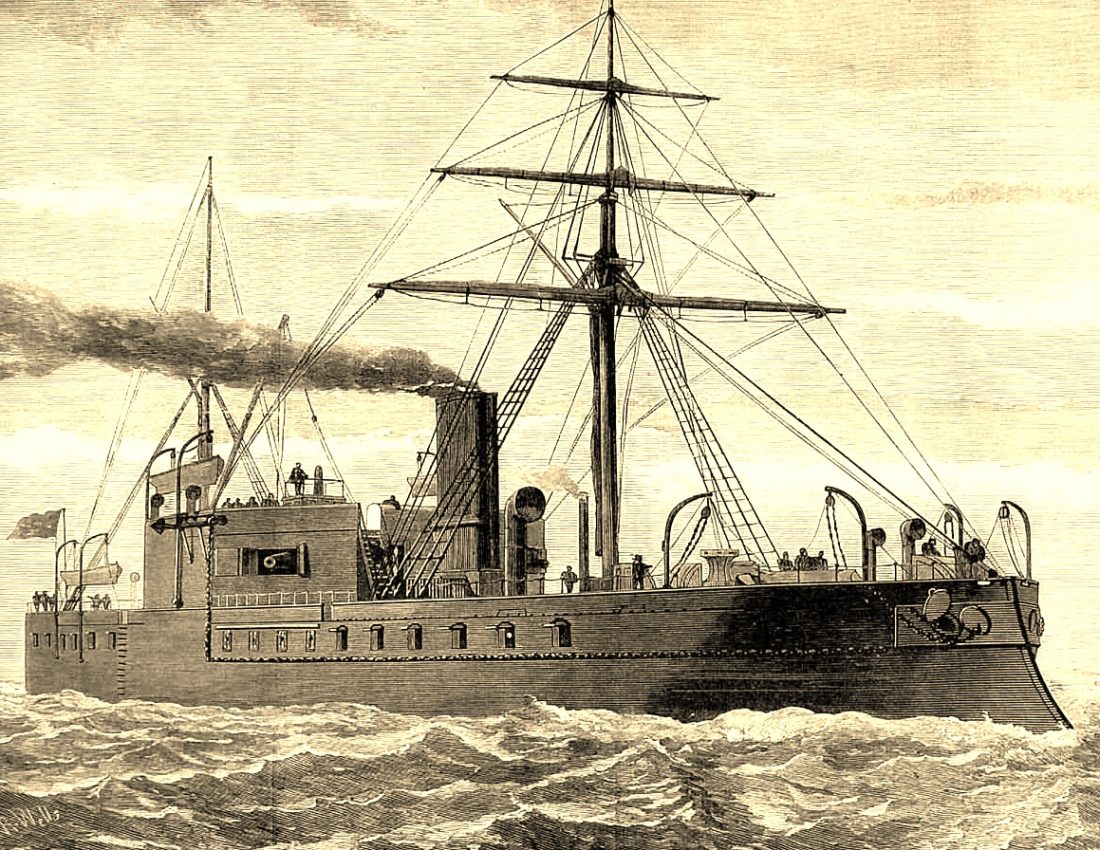
The vessels had been designed by the Turks themselves for service in the Black Sea and Aegean, and especially for protection of “The Straits” – the approaches to Istanbul/Constantinople from the north via the Bosporus and from the south via the Dardanelles. As such they needed to handy and manoeuvrable vessels and as they were intended for service close to their bases their coal bunkerage was limited. The hulls were short and stubby (245 ft. length and 52 ft. beam, displacing 4870 tons when ready for action) and two sets of Maudslay horizontal direct action engines gave maximum speed – on trials at least – of some 12 knots on 3200 Horse Power. Heavily armoured for their size, the main armament of four 12” muzzle-loading rifles were concentrated in a central battery amidships – a hexagonal box protected with 10.5” thickness of armour plating. Arcs of fire were restricted to little over 90 deg. for each weapon. Direct-ahead and direct-astern fire was possible, though at the price of major blast-damage to the decks. The result was that, theoretically at least, two weapons could be brought to bear on any target. Waterline armouring was 12” amidships, reducing to 7” at the bows and 6” at the stern.
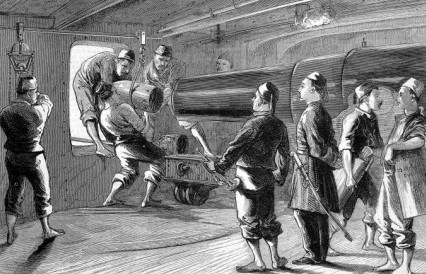 Loading a muzzle-loading rifle – probably 10″ – on a Turkish ironclad
Loading a muzzle-loading rifle – probably 10″ – on a Turkish ironclad
Though designed to carry a sailing rig this was abandoned shortly after the ships entered service. Despite the heavy gun armament the vessels’ rams were regarded as equally important weapons – potentially useful in confined waters for finishing opponents disable by gunfire – and indeed when taken into Royal Navy service Belleisle was listed as an “Armour-plated Ram.”
The role for which these vessels were designed by the Ottomans – and for which they were well suited – was not however one which fitted easily into contemporary Royal Navy thinking, which was focussed on battle-line tactics. A scathing evaluation of these ships was provided by Vice-Admiral Phillip Colomb, a noted theorist of naval warfare:
“The Belleisle was the negation of any approved from of battle; she was equally weak and equally strong in every direction and the expression of despair over the idea of any recognized method of fighting at sea”.
Despite this, Nicholas Dawlish was able, when on secondment to the Ottoman Navy, to make very effective use of the Mesrutiyet, Belleisle’s older sister, against the Russians, as detailed in Britannia’s Wolf.
It is of interest that the future Admiral Togo, Japanese victor over the Russians at Tsu Shima in 1905, came for work experience to the Samuda Brothers yard in 1877 after completing his training at Naval Preparatory School in Portsmouth and at the Royal Naval College at Greenwich. He supervised the construction at Samuda’s of the ironclad Fusō, which he accompanied back to Japan. Togo would have seen the Mesrutiyet, Orion and Belleisle on the stocks at Samuda’s. History does not however record whether Nicholas Dawlish encountered Togo there when he visited the yard!
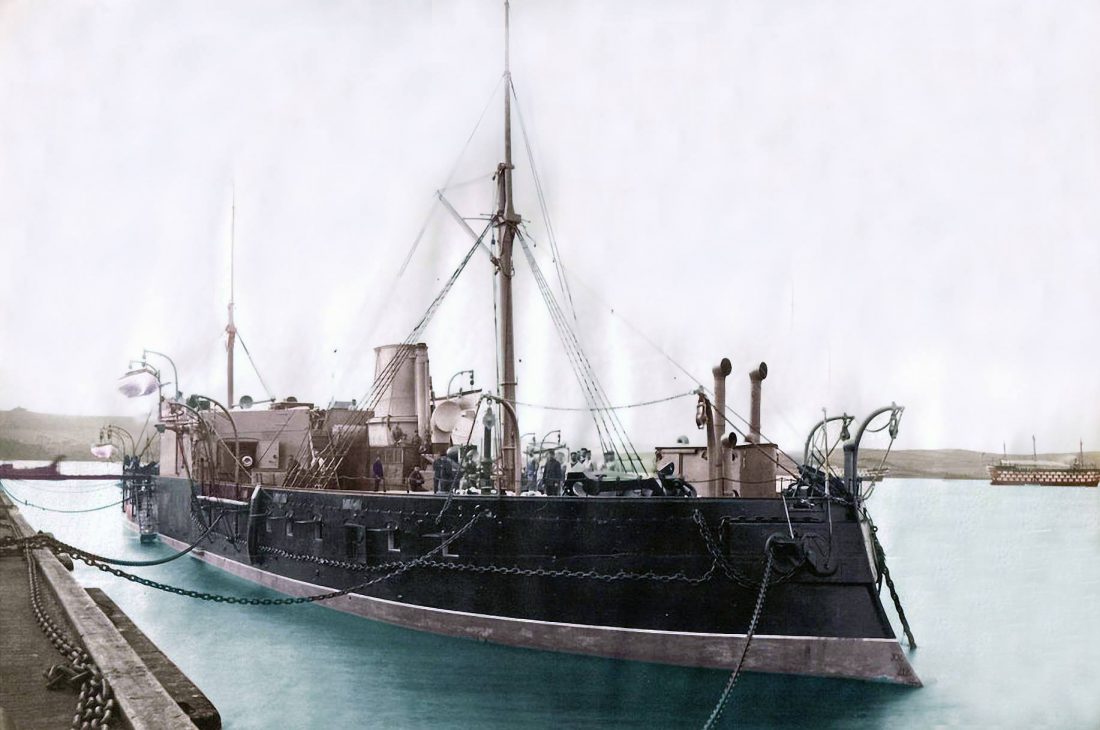 HMS Belleise in service
HMS Belleise in service
(With thanks to Diego Mar, whose masterly colourisation of naval old photographs has done so much to bring the past alive.)
Given such opinions of their value, it was difficult for the Royal Navy to find roles for Belleisle and Orion once the possibility of war with Russia receded after the end of the Russo-Turkish conflict in early 1878. Belleisle was relegated for much of her career to guardship service at Dublin, changing her anchorage only to visit other ports of the Irish command, for gunnery practice, or for refit at Devonport. Service on board her must have been routine to the point of utmost boredom and may well have represented the end of many a career.
In 1893 Belleisle became a gunnery target and was subjected to savage punishment, which she seems to have withstood well until finally sold for scrap in 1903. Her memory seems to have persisted in the Dublin area for she gets a mention in the “Nausicca” section of James Joyce’s Ulysses – set in 1904 – in which two little boys in sailor suits have “HMS Belleisle” embroidered on their caps.
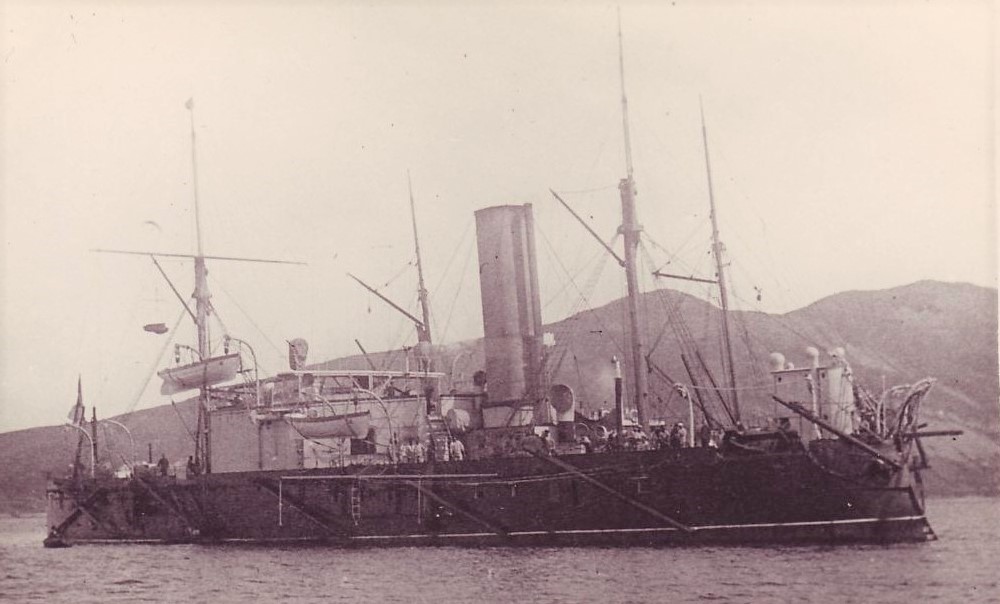
HMS Belleisle in her later years – probably anchored off the Irish coast in this photograph
HMS Orion saw service further afield. She served in the Mediterranean until 1888 and thereafter shadowed a Russian cruiser to the Far East during yet another scare about potential war with Russia. Orion’s ability to track her quarry was facilitated by Admiralty agents buying up the entire stock of coal at both Aden and Columbo, forcing the Russian to proceed at half-speed only. Orion stayed on at Singapore as guardship before returning to Britain to be paid off in 1893. Her subsequent service was in auxiliary roles and she was finally sold for scrap in 1913.

Two other ships under construction for foreign powers were also purchased by the Royal Navy in 1877. One, also under construction for the Ottoman Navy at the Thames Iron Works – another London shipyard – became HMS Superb. A large (5830 tons) central-battery ironclad, she had the distinction of carrying the largest number of large calibre muzzle-loaders (16 of 12” calibre) ever carried on a British warship.
 HMS Superb
HMS Superb
The fourth war-scare purchase became HMS Neptune, a huge (9310 tons) fully-rigged ironclad having as main armament four 12” muzzle-loaders in twin turrets amidships. She had been under construction for the Brazilian Navy at another London shipyard, J & W Dudgeon at Millwall, and was up to that time the most expensive warship acquired by the Royal Navy.
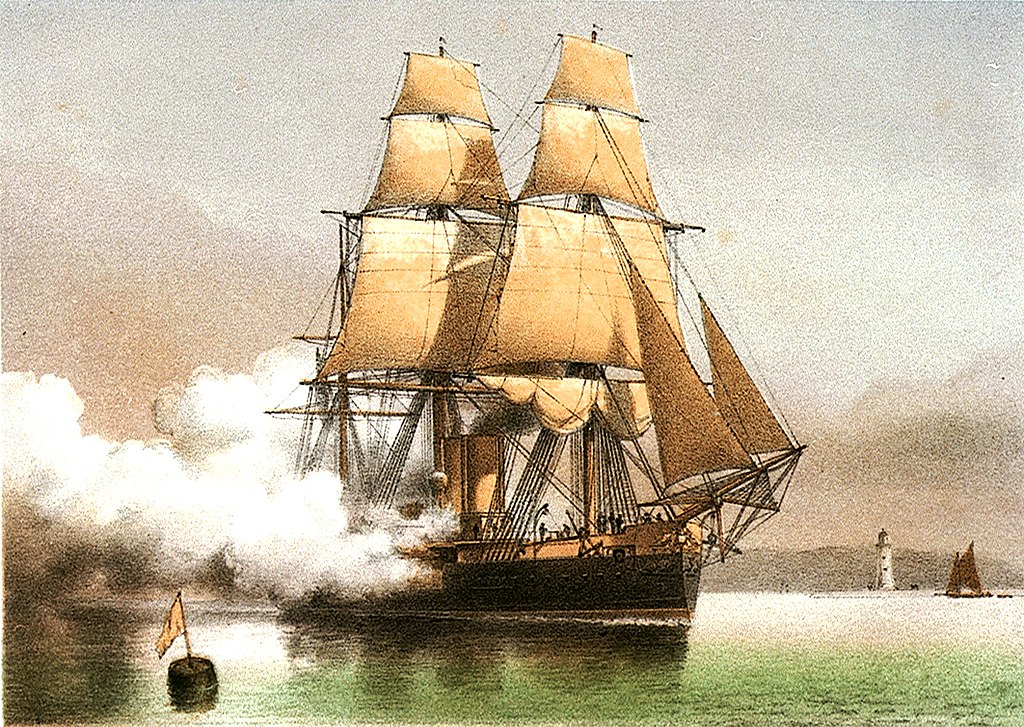 HMS Neptune
HMS Neptune
This 8964-ton, 300-ft long, ironclad carried her main armament of four 12.5-inch guns on turrets, though the ability to fire directly ahead and astern was removed by the presence of the masts for her sailing rig. The consequences of serious accident during her launch – when she was still Brazilian property – resulted in bankruptcy of the company that built her. Following purchase by Britain, several years passed in modification to Royal Navy standards and requirements. By the time she was finally commissioned in March 1883 she was already obsolescent. Four years later she was allocated – like Belleisle and Orion – to guardship duty, not fleet service. White elephant that she was, the Royal Navy can have made only few worse bargains.
Naval fiction enters the Age of Fighting Steam
Britannia’s Wolf , mentioned in the article above, opens the seven-volume series that will take you into a 19th Century world of naval adventure. Buy as Kindle or paperback or read it at no extra cost if you’re a Kindle Unlimited or Prime subscribe.
Click on the image below to get more details.
If you’re a Kindle Unlimited or Kindle Prime subscriber you can read any of the seven Dawlish Chronicles novels without further charge. They are also available for purchase on Kindle or as stylish 9 X 6 paperbacks.
Registering for the Dawlish Chronicles mailing list, by clicking on any of the cover images below, will keep you updated on new books. You will also receive five free short stories for downloading on your Kindle, computer or tablet.




